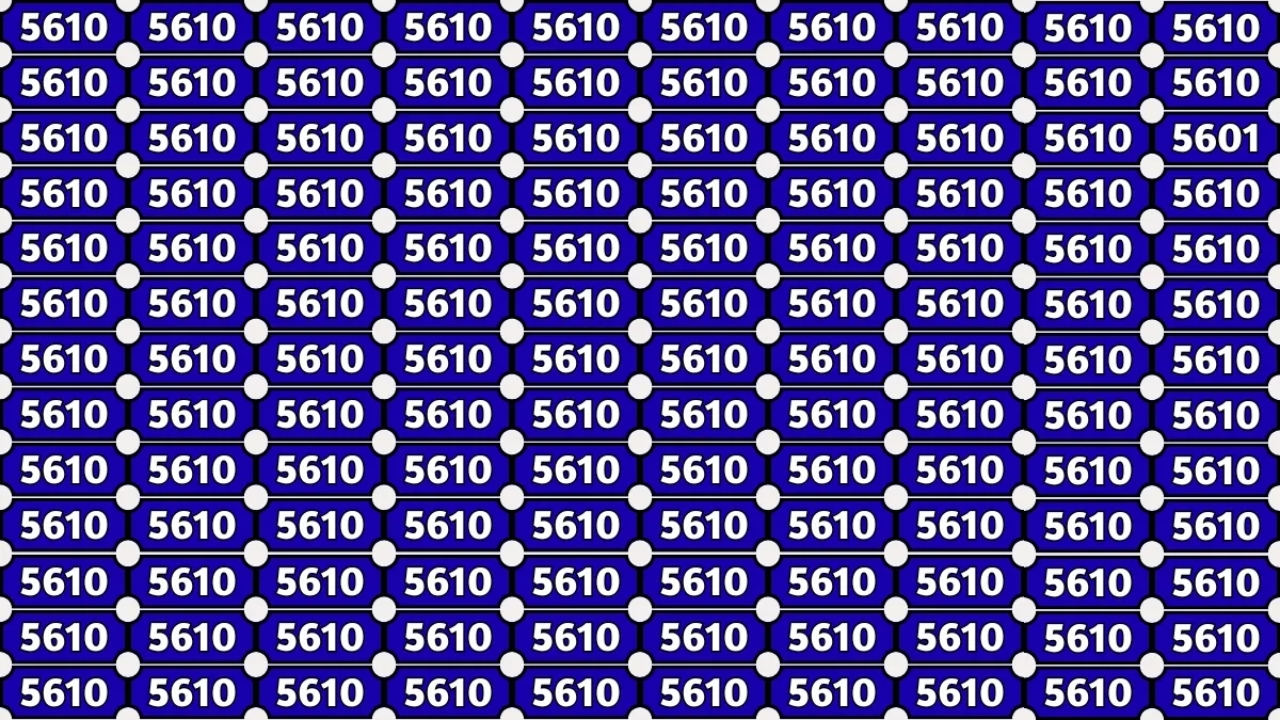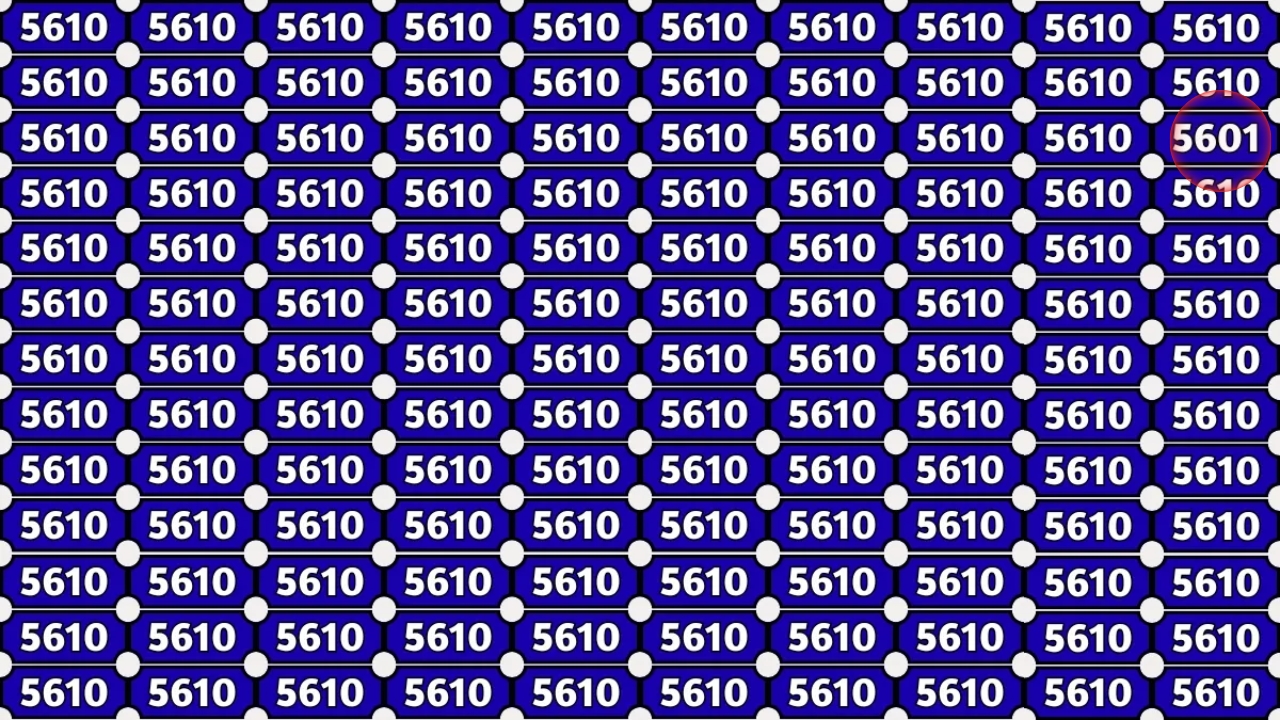Optical illusions have always had a way of captivating people, from classic puzzle images to modern brain teasers sweeping across social media. Australians are no strangers to these viral challenges. Whether it’s the debate over a dress colour or hidden numbers embedded in a picture, these illusions spark curiosity because they push the brain to process information differently. The latest puzzle doing the rounds tests how quickly—and accurately—you can identify the number 5601 among a sea of 5610s.
The Challenge Explained

At first glance, the numbers appear identical. Designed in a neat grid, most of the digits read “5610.” Only one set disguises the subtle outlier: “5601.” The trick lies in spotting the reversed last two digits before the eyes adjust to repetitive patterns. For those attempting it, the search is more puzzling than it initially seems.
The human brain tends to group familiar patterns, overlooking minor alterations. In this particular illusion, the “1” and “0” at the end of 5610 practically switch places in 5601. While it’s just a swap of two digits, entrenched recognition patterns make it surprisingly easy to miss. That’s exactly why the puzzle has become so engaging.
A Test of Observation and Patience
These optical games are more than casual entertainment. Experts in cognitive science point out that such challenges can improve concentration, attention span, and even short-term memory. Like crosswords or Sudoku, they engage the brain actively.
Australians who have tried the puzzle online report varied success. Some claim they located 5601 in seconds, while others admit it took them several attempts with plenty of squinting along the way. For those with sharp visual perception, the hidden number might jump out instantly. For others, the hunt becomes a real exercise in patience.
The sense of achievement when the number is finally found, however, is almost universal. It confirms not only visual sharpness but also perseverance.
Why We Love Brain Teasers
There’s also a social element driving the popularity of optical illusions. Shared widely on Facebook, Instagram, and TikTok, they provoke friendly competition. “Found it in 5 seconds!” some brag. Others jokingly admit defeat and wait for the answer reveal. Australians, known for their love of puzzles—from trivia to escape rooms—are naturally drawn to the challenge. The competitive angle, even in something as lighthearted as this, keeps the viral trend alive.
On a broader level, psychologists suggest that illusions remind us of how perception is never perfect. Our brains can be tricked, making these simple image puzzles an enjoyable reminder of the complexity of human cognition.
Optical Illusion Answer

If you’ve tried the 5601 illusion, the real question becomes: how quickly did you spot it? Some publications set aspirational timers, claiming that finding it within 15 seconds proves you have excellent observational skills. Of course, these claims are mostly playful, but they add a layer of urgency that makes the puzzle irresistible.
Whether you discover it instantly or after much effort, the underlying purpose remains the same—keeping the brain active and entertained. In the midst of daily routines, little diversions like these refresh the mind and offer moments of light-hearted challenge.
For Australians scrolling through their feeds today, the optical illusion is both a game and a gentle brain workout. If you haven’t attempted it yet, take a look—you might be surprised at how tricky a simple number swap can be.